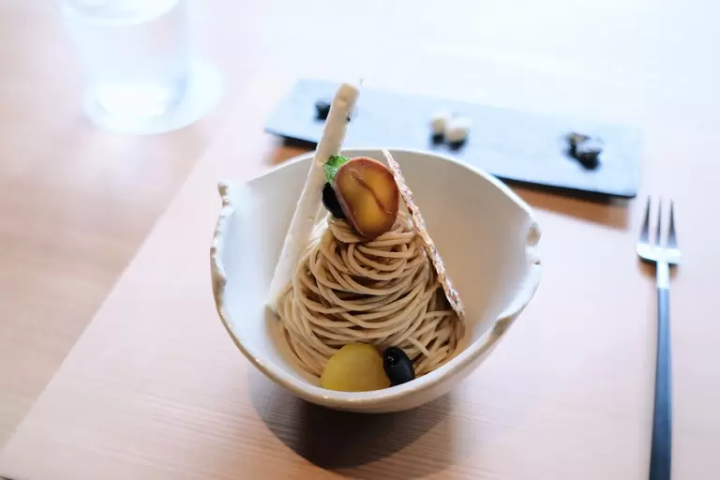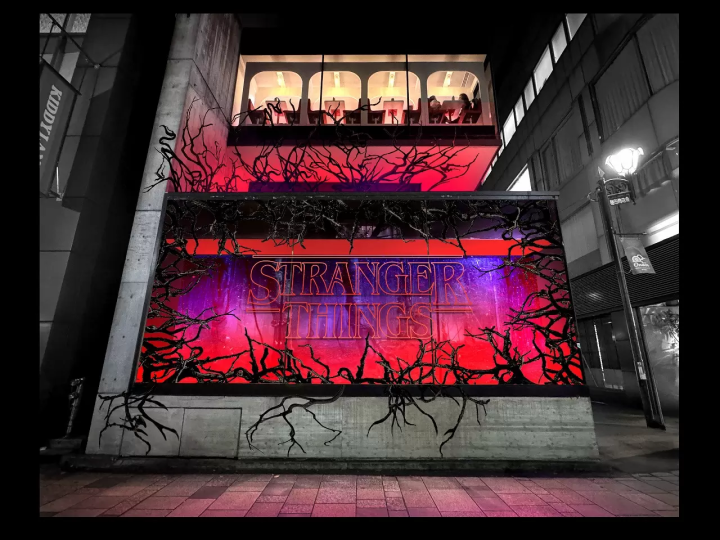Japanese Rural Food Experience in Tamba Sasayama (Part 2)

In the first part of my series on Tamba Sasayama, I wrote about the region's famous pottery and long history. This time, however, I want to shift the focus to the culinary treasures of Tamba Sasayama. Nestled in the rich, natural landscapes of Hyogo Prefecture in central Japan, Tamba Sasayama lies approximately halfway between Kyoto and Osaka, making it an accessible destination for those exploring rural Japan. The access to Tamba Sasayama is similar to that described in this article for the nea...
The Black Soybean Experience: From Harvest to Table
In autumn, one of the most significant events in Tamba Sasayama is the harvest of black soybeans (or “kuroedamame ”), an iconic product of the region. When I visited the area this autumn, the fields of Tamba Sasayama came alive with vibrant activity as local farmers, residents, and visitors gathered to pick the famous "kuroedamame." I felt like this was more than just a harvest—a celebration of the land, the people, and the cultural traditions that bind them.

But what makes kuroedamame so unique that people from the Kansai area (especially Osaka, Kyoto, Kobe) and even other parts of Japan travel to Tamba Sasayama to experience it firsthand? The answer lies in the unique qualities of the black soybeans themselves. Tamba Sasayama's kuroedamame are prized for their exceptional flavor, texture, and nutritional value. The beans are larger, sweeter, and more aromatic than other varieties, thanks to the region's fertile soil, clean water, and favorable climate conditions.

The history of black soybeans cultivation in the area spans hundreds of years, and the beans have become an integral part of Japanese culinary culture. They are often used in celebratory dishes, especially during the New Year, to symbolize health and longevity. This deep cultural significance, coupled with the high quality of the product, has made Tamba Sasayama's black soybeans highly sought after by chefs and food enthusiasts like me and you!
Visiting Tamba Tabuchi Farm
If you want a deeper insight into local farming, consider visiting Tamba Tabuchi Farm. Located in the heart of the Sasayama Basin, this farm has produced black soybeans and rice using traditional cultivation methods for over 300 years.Visitors can participate in the black edamame harvest at Tabuchi Farm, which typically runs from early October to early November. For the most current information on harvest dates and any potential changes, please check the farm's official website. While the site is primarily in Japanese, you can use an automatic translation function to assist with navigation!

Before harvesting begins, you will receive a lecture about the black soybeans, including tips on checking if the beans are ready to be harvested and instructions on how to cook them properly. The staff will also treat you to kuroedamame gohan—rice cooked with black soybeans. I was surprised by how simple the dish was, yet it belied its incredible taste. The soybeans add a rich, slightly sweet flavor to the rice, perfectly capturing the essence of the harvest.(Black soybean rice is primarily offered for free during the harvest season of black soybeans. However, please be aware that it may be offered for a fee during certain times.)


After trying the rice, we went to harvest the beans. While it was raining a bit, the sense of being in the field was exciting! Just wear something you don't mind getting dirty, and remember that rubber shoes can be rented for a small fee at the farm. It’s a perfect activity for those who want to connect with nature and understand the roots of Japanese culinary culture. It’s also a fantastic educational opportunity for families, providing a deeper appreciation of where food comes from.
Odagaki Shoten: A Must-Visit for Sweet Lovers
If you're visiting outside of autumn and can't join the harvest, head to ODAGAKI Mamedou, where you can enjoy a range of dishes and sweets made from Tamba Sasayama's famous black soybeans. Founded in 1734, Odagaki Shoten is known as a long-established black soybean specialty shop that is highly valued by top chefs and confectionery artisans for its high-quality products. In April 2021, a café "Odagaki Mame-do" was opened after renovating a building registered as a tangible cultural property.

The café’s menu features sweets and drinks made from local ingredients, including the "ODAGAKI Mont Blanc" (a dessert of sweetened chestnut purée in the form of vermicelli), made with 100% Tamba chestnuts, some of the finest in Japan. The roasted chestnuts, almond biscuits, custard, cream, and black soybeans were so good!

I got a seat next to the window to admire the mesmerizing stone garden view—so captivating you might forget to order! The café also serves black soybean tea paired with an assortment of sweets, all presented on custom-made Tamba-yaki pottery.


Black soybeans are the star here, from Japanese confections to fragrant baked goods. I recommend visiting the café first to choose your favorite items for souvenirs afterward.

When finished, stroll through the old castle town and, if you’re hungry, try the region’s signature wild boar hotpot (botan nabe)! Pro tip - during busy times, a self-service machine allows guests to check in, providing a QR code so you can explore the nearby Kawaramachi Tsumairi Merchant Houses while waiting for your turn!


Game Cuisine: Botan Nabe
One unique aspect of Tamba Sasayama’s culinary culture is the use of wild boar meat, particularly in dishes like wild boar stew. Although some might find this controversial, it’s essential to understand that wild boar populations in rural Japan are growing rapidly, often causing significant damage to local agriculture. Sustainable hunting helps manage these populations, supports local farmers, and prevents crop destruction.

I visited Yamazato Ryori Maekawa to try an authentic botan nabe experience. In Tamba Sasayama, the traditional way to enjoy "botan-nabe" is with miso, which gives it a rich flavor. However, here you can also enjoy it lightly with broth.The boar meat is slowly simmered with fresh, local vegetables, creating a hearty and warming dish—perfect for the colder months! The restaurant is just a 10-minute walk from Sasayama Castle Ruins, making it an ideal stop on your journey through the area.



The restaurant is housed in a beautifully renovated old Japanese house, offering an authentic atmosphere. The owner and staff were warm and welcoming to me! They also mentioned their desire to welcome more foreign guests and showcase the finest Tamba Sasayama dishes.
In addition to wild boar stew, Yamazato Ryori Maekawa specializes in kaiseki cuisine—a traditional multi-course meal that highlights seasonal ingredients. Try dishes featuring local specialties, including wild plants, vegetables, river fish, and meats from the surrounding area.
Finishing up the trip with local sake
Nestled in the heart of the old part of Tamba Sasayama is a gem you simply cannot miss: the Horoyoi Jokagura, an old sake brewery run by Houmei Shuzo, a renowned sake producer in Tamba Sasayama since 1797. The current building retains much of its original Edo-period structure, allowing visitors to experience its early charm.

The brewery offers more than just sake! It's also a window into history. You can find old brewing tools and informative panels detailing the sake-making process. Large brewing and storage tanks—some with unique equipment—highlight their innovative methods. One fascinating aspect is Houmei Shuzo's "Music Vibration Brewing" method, which uses music during fermentation. The sake produced through this "Music Vibration Brewing" method benefits from tanks equipped with transducers that introduce sound vibrations into the brew.

So, what kind of music do they use? Classics like Mozart's Symphony No. 40 and Beethoven's Symphony No. 6, as well as the traditional Tamba Sasayama folk tune, Dekansho Bushi, all play a part in the process. I thought it was so fascinating!

Conclusion
A culinary journey through Tamba Sasayama is about more than just eating. For me, it was about connecting with the natural environment, the local culture, and the people. From the black soybean harvest to savoring the rich taste of botan nabe, Tamba Sasayama offers an authentic glimpse into rural Japanese life. Visiting in the autumn, when the black soybeans are ready for harvest, is highly recommended! Again - please check part 1 of my article about this area for even more insights!
Welcome to Hyogo Hyogo is a gateway to the Kansai region, which nurtures the blessed land that connects the Sea of Japan, the Chugoku Mountains, and the Seto Inland Sea, as well as the blessed climate. There are many spectacular views that will catch your eye, such as Himeji Castle, a World Heritage Site that was selected as one of the 100 Best Cherry Blossom Spots, and the panoramic night view from Mt. Rokko. The world-famous Kobe brand, KOBE BEEF, which is synonymous with Tajima beef, is one of Japan's leading beefs, and the sake rice ``Hyogo Yamada Nishiki'' is a gem that will surprise your tongue. Arima Onsen is a famous hot spring, and Kinosaki Onsen has appeared in many literary works. Surrounded by nature, you can relax your mind and body. You can come across memorable sounds such as the thunderous sounds of the whirlpools of Naruto on Awaji Island, and the dynamic sounds of the fireworks festivals held in various places in the summer. In the herb gardens and botanical gardens in the prefecture, you will be healed by the gentle and pleasant scent of herbs and flowers throughout the four seasons. Enjoy a new journey in Hyogo that stimulates the five senses of sight, taste, touch, hearing, and smell.
The contents on this page may partially contain automatic translation.

































![[Wakayama Guide] Ume and Umeshu (Plum and Plum Wine)](https://resources.matcha-jp.com/resize/720x2000/2025/12/08-252248.webp)
![[2025 Update] From Kansai Airport to Namba - Recommended for travelers with large luggage! Travel comfortably by bus](https://resources.matcha-jp.com/resize/720x2000/2025/10/25-248088.webp)